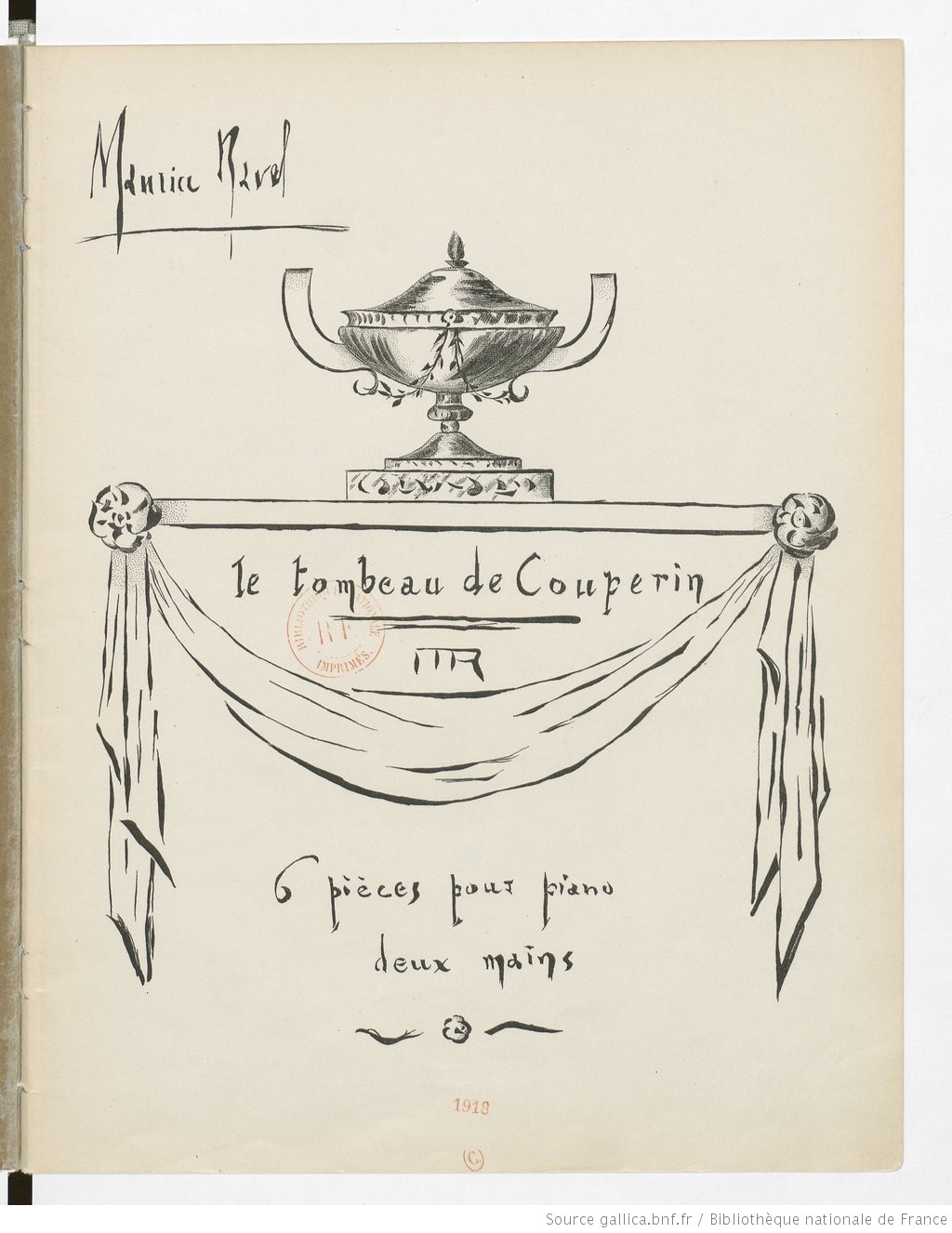Paris-Manchester 1918
Conservatoires in time of war
Le Tombeau de Couperin
Begun in April 1914 with the composition of Forlane, the Tombeau de Couperin reflected the current trend of return to the grand siècle of French culture and the revival of older music.[1] Ravel, who was making great efforts to be accepted for the draft, continued to work on his score until 1917, adding five further movements before he was called up to serve as a driver. The suite was premièred on 11 April 1919 at the Salle Gaveau by Marguerite Long and met with considerable success.
Ravel’s wartime experiences prompted him to dedicate each movement of the Tombeau to friends who had been killed at the front during the war. Prélude is dedicated to Jacques Charlot, who had transcribed Ravel’s works for the piano; Fugue is dedicated to Jean Cruppi; while Forlane andRigaudon are dedicated respectively to his friend lieutenant Gabriel Deluc from Saint-Jean-de-Luz and to Pierre and Pascal Gaudin, two brothers from the same town as Ravel who were killed on the same day. Menuet pays homage to Jean Dreyfus, son-in-law of Ravel’s marraine de guerre [wartime female pen-pal], at whose home Ravel finished writing the Tombeau de Couperin. Toccata is dedicated to Joseph de Marliave, a musicologist killed at Senon on 24 August 1914 and the husband of Ravel’s faithful friend, the pianist Marguerite Long.
[1]In connection with this trend, Wanda Landowska (1879-1959) and the revival of interest in the harpsichord at the start of the 20th century spring to mind.




